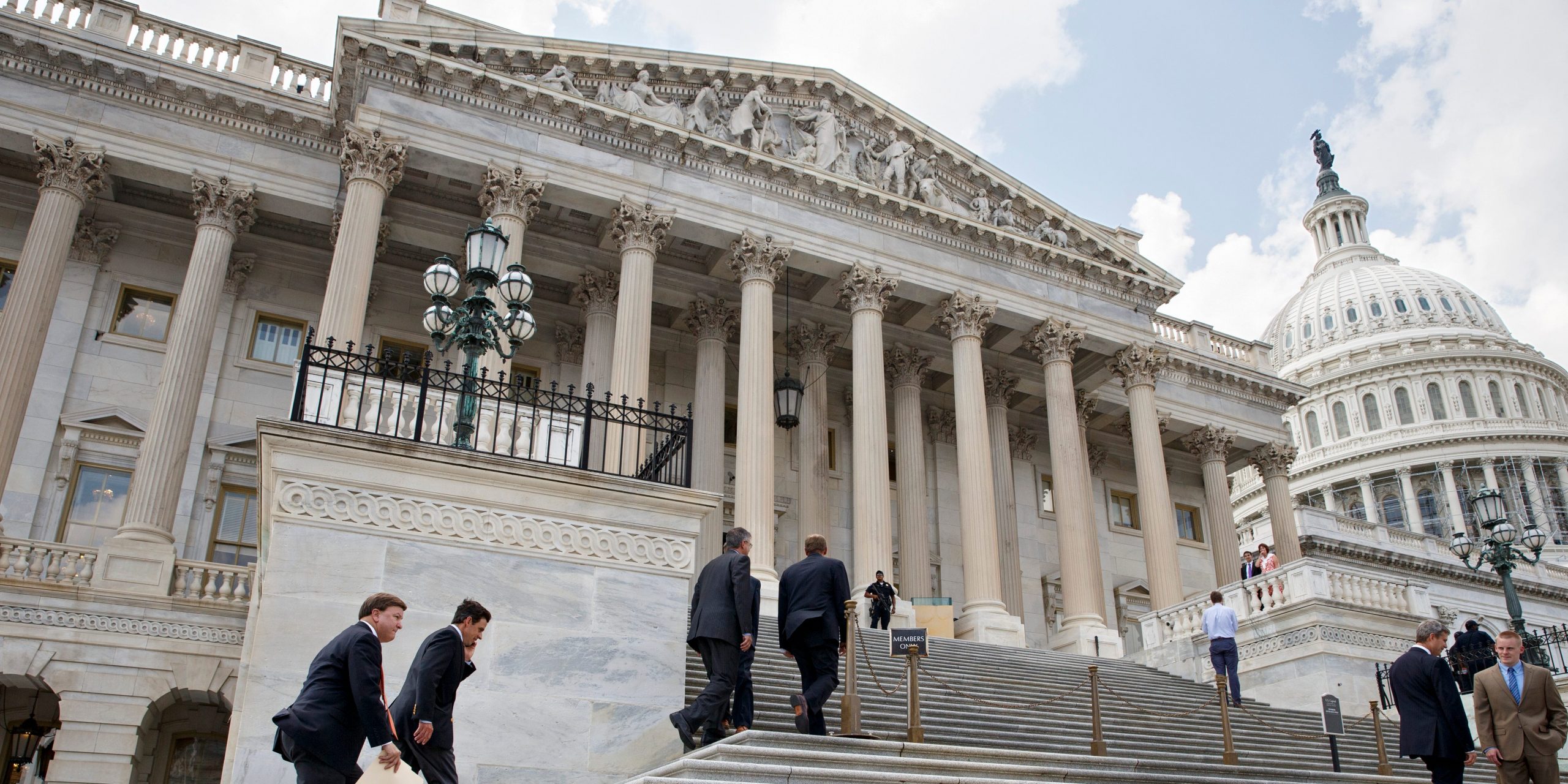
AP
- The Congressional Budget Office’s latest budget outlook sees federal debt becoming nearly twice the size of the US economy in 2050.
- Spending on economic relief throughout the coronavirus pandemic drove government debt to its highest since World War II.
- Higher borrowing costs and rising interest rates will drive debt to 104% of gross domestic product next year and 195% of GDP in three decades, the CBO said.
- The raised estimates extend arguments between federal budget hawks and those advocating for increased spending to drive economic growth after the pandemic.
- Visit Business Insider’s homepage for more stories.
Lofty borrowing costs and spending on economic relief will push the federal debt to nearly double the size of the US economy, the Congressional Budget Office said in a Monday report.
Though the effects of the coronavirus pandemic are expected to fade through the next year, deficits linked to fiscal stimulus will drive debt to levels never seen before. The CBO expects federal debt to reach 98% of the US’s gross domestic product this year and 104% in 2021.
By 2050, increased spending and higher borrowing costs will push that share to 195%, or just below twice the economy’s total size. That’s up from the 180% level forecasted in January. For comparison, the previous record was 106% seen just after World War II.
"Interest rates are projected to remain low for several years as the economy recovers from the pandemic, holding down borrowing costs. But continued deficits drive up the cost of servicing the debt," Phillip Swagel, director of the CBO, said in a statement.
The nonpartisan agency's report projects federal deficits, debt, spending, and revenues over the next 30 years should current laws and spending generally stay the same. Though stimulus needs will wane as the virus is contained, the CBO expects spending to grow from 21% of GDP in 2019 to 31% in 2050. Part of the increase will be driven by higher costs for healthcare programs and for Social Security, according to the Monday report.
The lifted estimates extend the arguments for and against near-limitless government spending. While some believe the forecasted debt sizes are unsustainable and could drive a fiscal meltdown, others argue increased spending can drive growth so long as inflation is held in check.
At least for through this week, lawmakers and economists arguing against fresh relief spending are likely to win out. Congress remains deadlocked in negotiations on new stimulus, and new hurdles for passing a federal budget will likely pull attention away from such talks. Additionally, Senate Republicans' push to replace Justice Ruth Bader Ginsburg on the Supreme Court will all but certainly overshadow interest in passing new aid.

